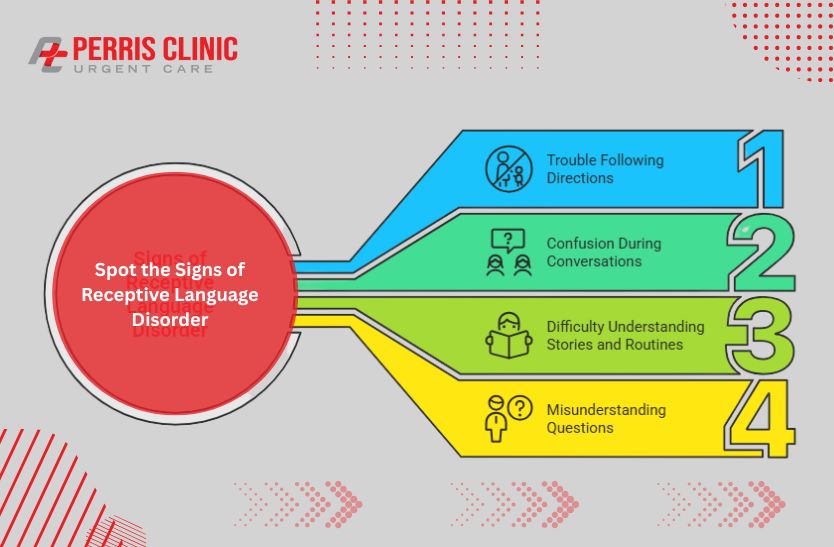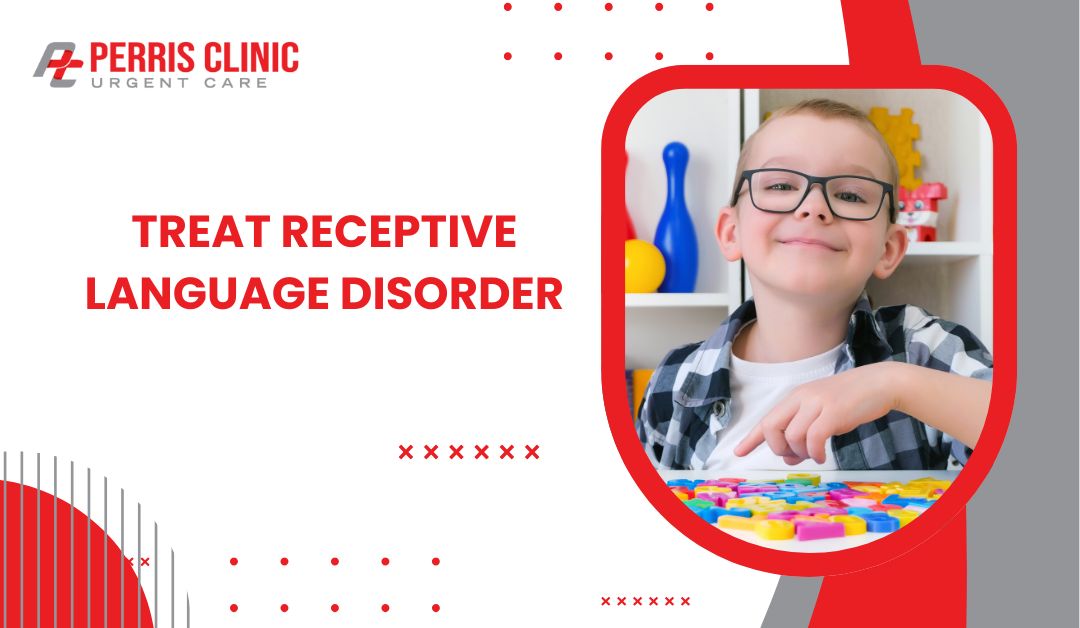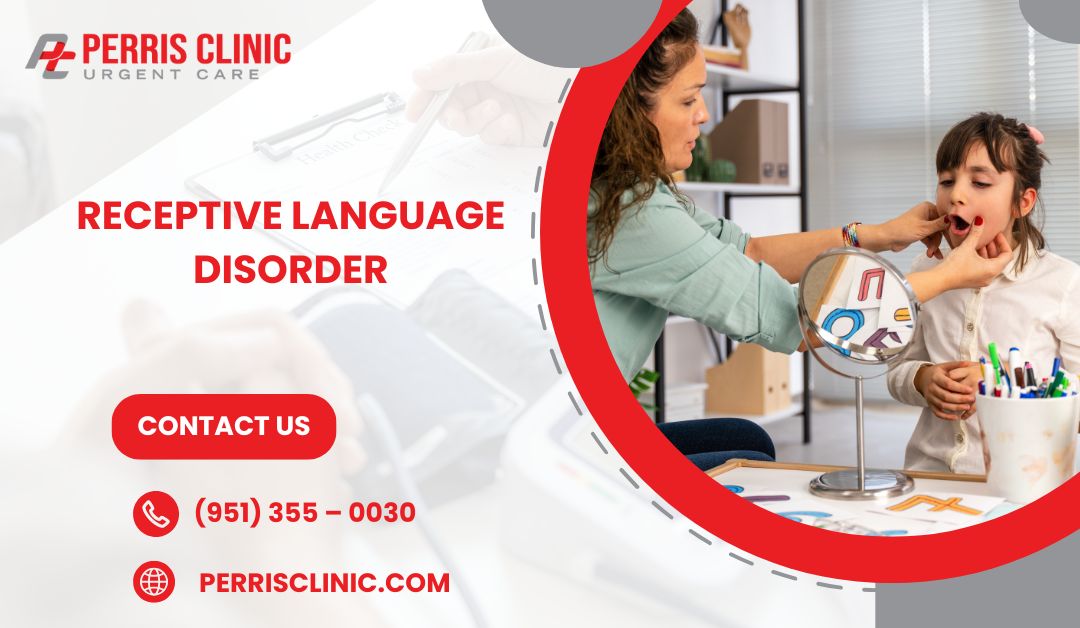Receptive language disorder refers to a person’s difficulty in understanding what others say. It often appears in young children, but adults can also develop it. A child may not follow simple directions or answer when called.
They may seem confused when someone speaks to them. These signs may indicate a speech and language delay. The good news is that help is out there. With early support and speech therapy, many kids improve. In this blog, we’ll examine what this disorder is, its causes, and effective treatment methods straightforwardly and clearly.
What Does Receptive Language Disorder Mean?
Receptive language disorder refers to difficulty understanding spoken words and sentences. It is different from problems with speaking or using words. People with this disorder find it hard to follow directions or grasp what others say. Let’s break down what this means and how it shows up.
Understanding Receptive Language Disorder
Receptive language disorder affects a person’s ability to understand language. It is not just about speaking clearly, but also about how the brain processes sounds, words, and sentences. When someone has this disorder, they may hear words but not fully understand them. This can make everyday talks confusing and frustrating.
How It Differs From Expressive Language Disorder
There are two main types of language disorders. Receptive language disorder means difficulty in understanding. Expressive language disorder refers to difficulty articulating thoughts into words. Some kids have one, and some have both. Knowing the difference helps get the right kind of help.
Who Does It Affect and When?
This disorder often appears in young children as they learn to talk and listen. It can show up as early as toddler age. However, sometimes older children or even adults may struggle to understand language. Early diagnosis is essential because the sooner it’s found, the better the support can be.
Spot the Signs of Receptive Language Disorder
It can be challenging to initially determine if a child has a receptive language disorder. But sure signs often stand out. Recognizing these early helps parents and teachers get the proper support fast. Here are some common signs to watch for.

Trouble Following Directions
Children with receptive language disorder often struggle to follow simple instructions. For example, if you ask them to “pick up your toy,” they may not understand what to do. This happens because they have difficulty processing spoken language.
Confusion During Conversations
Kids may seem confused when people talk to them. They might ask for things to be repeated a lot or respond in ways that don’t fit the question. This can make conversations hard for both the child and the listener.
Difficulty Understanding Stories and Routines
Many children with receptive language disorder struggle to follow stories or daily routines. They may get lost during a storytime or not remember the steps to get ready for bed. This shows they struggle with language comprehension.
Misunderstanding Questions
If a child often answers questions incorrectly or gives unrelated answers, this can be a sign. It means they might not fully understand what is being asked, which is common in receptive language delays.
Causes and Risk Factors of Receptive Language Disorder
Knowing what causes receptive language disorder helps us understand why some kids struggle with language. Several factors can play a role. Sometimes, it happens for no apparent reason. Other times, it relates to health or development.
Developmental Delays
Some children experience delays in their growth and development. These developmental delays can impact their understanding of speech. This means their brain takes longer to process sounds and language.
Hearing Problems
Hearing loss is a common cause. If a child can’t hear well, they may miss essential sounds and words. This makes it hard to understand what people say, leading to language comprehension problems.
Brain Injury or Neurological Conditions
In some cases, brain injuries or conditions like autism or ADHD affect language skills. These can make it challenging to process spoken language, leading to a receptive language disorder.
Lack of Early Language Exposure
Children learn language by hearing and interacting with others. If a child doesn’t get enough chances to hear and use language early on, they might face delays in understanding speech.
How Professionals Diagnose It
Receiving a proper diagnosis is crucial for helping children with receptive language disorder. Speech-language pathologists, or SLPs, are the experts who check how well a child understands and uses language. They use special tests to see where the child needs help.
Who Does the Testing?
A speech-language pathologist usually works with the child. They observe how the child listens, follows directions, and answers questions. They may also conduct a hearing test to rule out any potential issues.
What Does the Evaluation Involve?
The tests assess a child’s understanding of words, sentences, and stories. The SLP may ask the child to point to pictures, follow instructions, or repeat words. They also talk to parents and teachers to learn about the child’s daily communication.
Why Early Diagnosis Matters
The sooner a child gets diagnosed, the sooner therapy can start. Early language intervention can help children improve more quickly. It provides them with tools to understand and use language more effectively as they grow.
How to Treat Receptive Language Disorder
When a child has a receptive language disorder, speech therapy can be highly beneficial. The goal is to enhance the child’s understanding of words and sentences. Treatment usually involves regular sessions with a speech-language pathologist.

Speech and Language Therapy
During therapy, the SLP uses games, stories, and exercises to build language skills. They focus on helping the child follow instructions, understand questions, and enhance their listening skills. Therapy sessions are fun and tailored to the child’s needs.
Tips for At-Home Support
Parents and caregivers can help by using simple language at home. Speaking slowly, repeating essential words, and using gestures can make understanding easier. Reading books and telling stories together also supports language development.
Working with Teachers and Caregivers
Teachers can support children by providing clear, concise directions and utilizing visual aids. They can create routines to help the child know what to expect. When parents, teachers, and therapists work together, children get the best help.
Individualized Plans Matter
Every child is different. Speech therapy is most effective when the plan aligns with the child’s specific challenges and strengths. The SLP will adjust the approach as the child improves.
Pediatric speech therapy helps children improve communication, understand language, and express themselves clearly. Read this to learn why early support matters for growing minds.
How Parents and Teachers Can Help
Parents and teachers play a significant role in helping a child with a receptive language disorder. They can make everyday talks easier and support the child’s progress.
Use Short, Clear Sentences
Speak in short sentences with simple words. This helps the child follow what you say. For example, instead of saying, “Please clean up your toys and get ready for dinner,” say, “Pick up your toys,” then, “Time for dinner.”
Repeat or Rephrase When Needed
If the child doesn’t understand, try saying the same thing differently. Repeating or changing words can help them grasp the meaning more effectively.
Use Visual Cues and Gestures
Show what you mean with pictures, hand signs, or body language. Visual clues support understanding, especially for kids who struggle with spoken language. Give the child time to respond. Praise their efforts and stay calm. Positive support builds confidence and helps reduce frustration.
Receptive Language Disorder vs. Just “Late Talking”
Sometimes, kids who have trouble understanding words are called “late talkers.” However, receptive language disorder differs from simply being late to speak.
What Makes Them Different?
Late talking means a child speaks fewer words than usual but can still understand what others say. With receptive language disorder, the child struggles to comprehend spoken language.
When Should You Be Concerned?
If a child does not follow simple instructions or seems confused by everyday talk, it might be more than just late talking. These signs mean the child needs an evaluation by a speech-language pathologist.
Why It Matters
Knowing the difference helps parents and teachers identify the most suitable support for their students. Late talkers may catch up on their own, but children with receptive language disorder often need speech therapy to improve their language skills.
When Should You Ask for Help?
Knowing when to get help is essential for a child with a receptive language disorder. Early support can make a big difference. Parents should watch if their child meets typical language milestones. For example, by the age of 2, many children understand simple directions and can say a few words. If a child struggles to understand or respond, it could be a sign.
Signs to Look For
If your child often seems confused, can’t follow basic instructions, or doesn’t respond to their name, it’s time to talk to a professional. These signs may show a language comprehension problem.
Get a Speech Evaluation
A speech-language pathologist can assess your child’s language skills. Early diagnosis leads to early language intervention, which enables children to improve more quickly.
Perris Clinic Support
If you live near Perris, CA, our clinic offers speech therapy services for children with receptive language disorder.
Final Thoughts
Receptive language disorder can make understanding speech hard for children and adults. However, with early help, many individuals can improve. Speech therapy and language support provide children with the tools to follow directions and participate in conversations more easily.
If you notice signs like trouble following instructions or confusion in talks, don’t wait. Early diagnosis and treatment help children develop their language skills.
At Perris Clinic, we’re ready to support your child’s journey. Book a consultation with our speech-language pathologist to get the proper care and help your child thrive.
Frequently Asked Questions (FAQs)
Can a receptive language disorder go away?
With early speech therapy and support, many children improve their understanding of language. Ongoing care helps them catch up and communicate better.
Is receptive language disorder part of autism?
Receptive language disorder can appear in children with autism, but can also happen on its own. A professional diagnosis is key.
Can adults have a receptive language disorder?
Yes, adults can have it due to brain injury or other causes. Speech therapy helps improve language skills at any age.
At what age is a receptive language disorder diagnosed?
It’s often diagnosed in young children, usually between the ages of 2 and 5, but can be found at any age with speech difficulties.
What’s the difference between expressive and receptive language disorders?
Receptive means trouble understanding language. Expressive means difficulty speaking or using words. Some people have both disorders.


Trackbacks/Pingbacks